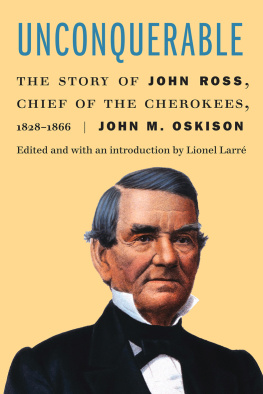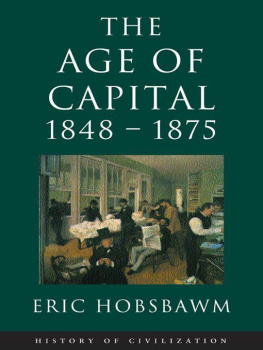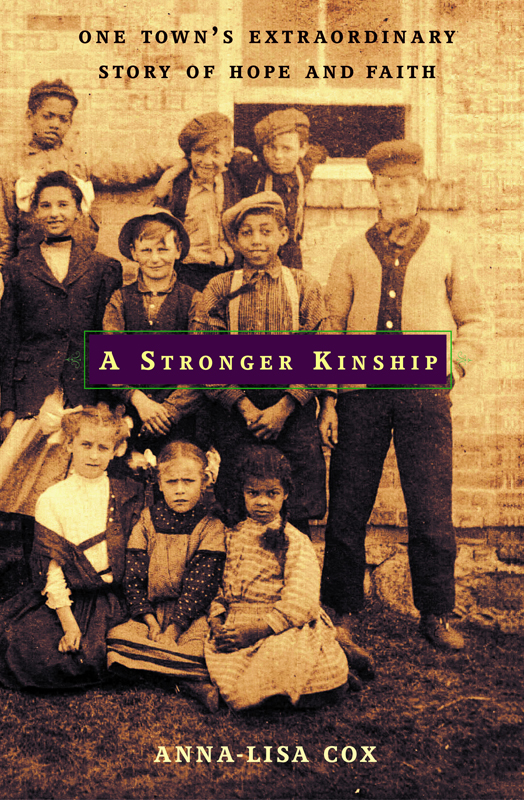Copyright 2006 by Anna-Lisa Cox
All rights reserved. No part of this book may be reproduced in any form or by any electronic or mechanical means, including information storage and retrieval systems, without permission in writing from the publisher, except by a reviewer who may quote brief passages in a review.
Little, Brown and Company
Hachette Book Group
237 Park Avenue, New York, NY 10017
Visit our Web site at www.HachetteBookGroup.com.
www.twitter.com/littlebrown
First eBook Edition: February 2006
ISBN: 978-0-316-07569-5
To my parents, Karen and John,
for showing me the way
William Frank Conner
Born in North Carolina in 1838. Came to Michigan in the early 1850s with his parents, William Bright and Elizabeth (Schrugs) Conner, his extended family, as well as Himebrick Tyler. Joined the Michigan First Colored Regiment, also known as the 102nd USCT, in 1863. Came to Covert in 1866 with his extended family, where he became a successful and wealthy farmer. Won numerous political positions in Covert, including Justice of the Peace, making him the first black man to hold that position in Michigan. Was one of the founders of Coverts Emancipation festival. Died in 1908.
Wife: Elizabeth Ann Shepard
Children: John L. (Johnny), Letticia, Clara, Myrtie*
Nancy (Conner) Seaton
Born in North Carolina in 1845. Sister to William Frank Conner. When her husband returned from the Civil War they moved to Covert with her parents, brother, and extended family. Nancy and her husband moved briefly to Lawrence, Kansas, in 1871 and returned to Covert in 1872. Nancy died sometime during the 1930s after moving to Lansing, Michigan, in the 1920s.
Husband: Joseph Seaton
Children: Joseph, Emmaline (Emma), Ora
Himebrick Tyler
Born in 1833 in North Carolina. Came with the Conners to Michigan in the early 1850s. Joined the Michigan First Regiment with his brother and father-in-law in 1863. Moved with them to Covert after the war.
First wife: Zylphia Conner
Himebrick and Zylphias children: Cornelius, Octavius, and James
Second wife: Louisa Mathews (widow, formally married to Allison Mathews, who died during the Civil War)
Louisas children: Isadore, Mary Jane, Allison
Himebrick and Louisas children: Almira, Alvin Sheridan, Julia Ann, Elvira, Arvena, Sherman Emery (In the mid 1890s Sheridan would be involved in a legal case that would go all the way to the Michigan Supreme Court.)
William Bright Conner
Born in North Carolina in 1812. Was a successful owner of a turpentine plantation in Greene County, North Carolina, before leaving the state for the North in the early 1850s. He died in 1901.
First wife: Elizabeth Schrugs (died before they moved to Covert)
William Bright and Elizabeths children: Franklin, William Frank, Nancy, John, Zylphia
Second wife: Abigail
William Bright and Abigails children: William Frank, Alexander, Theodore, Allen, Frederick Douglass, Sarah, Ulysses
Henry Shepard
Born into slavery around 1817 in Virginia and taken into Kentucky as a child. In his early twenties he fled bondage twice, succeeding the second time in getting to Canada. Returned to the United States shortly thereafter and settled in Cass County, Michigan. Henry was a successful farmer in Cass County and began a secret career as a conductor on the Underground Railroad. Although he was in his forties when the Civil War broke out, he enlisted in the Michigan First Colored Regiment, along with his son-in-law William Frank Conner. Henry and his wife moved to Covert in 1877. Henry died in 1884.
Wife: Martha Barton
Children: Henry and Martha had fifteen children, six of whom survived into adulthood, including Nancy, who would marry William Frank Conner and later persuade her parents to move to Covert.
Alfred Packard
Born in 1834 in New York. Came to Covert in 1868 from Ohio, where his family had been living for some time. He started the first successful logging and milling business in Covert. Nephew to William Packard, who with his sons (including William O. Packard) would join with Alfred in building three large mills in Covert, bringing a logging boom to the area. Before coming to Covert both Alfred and William Sr. had been active in their Congregational church in Chatham, Ohio, where they had been followers of a radically abolitionist minister. Once in Covert the Packard family was aggressive in its policies to hire an integrated workforce and recruit African American congregants to the Covert Congregational Church.
Dawson Pompey
Born between 1801 and 1804, birthplace unknown. By 1850 he was living in Indiana with his brother, Fielding, and their families. Two of his sons, Napoleon and Washington, came to Covert in 1866 and soon persuaded their father to join them. He was the first black man elected to political office in Covert, in 1868 (illegally).
First wife: Sina
Dawson and Sinas children: Eliza, Lorenzo, Napoleon, Washington, Catherine, Susan, Dawson Jr., Elias
Second wife: Hulda
Dawson and Huldas children: Sylvester, Grace
Frank Rood
Born in Michigan in 1864, Frank Rood grew up in Covert. The Rood family was distantly related to the Packards, who had also originated in Plainfield, Massachusetts.
Parents: Edward and Flora (came from Plainfield to Michigan around 1864)
Franks uncles in Covert: Thaddeus Rood (moved to Covert in 1869), David Rood (retired to Covert in the 1880s after decades of missionary work in Africa)
*All children mentioned are only those that survived into adulthood.
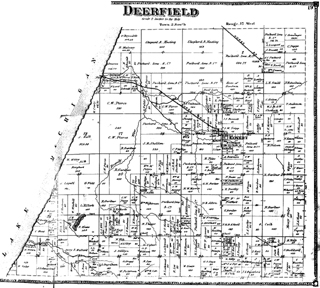
Plat map of Covert Township, Michigan, 1873. At the time, Covert was still called Deerfield. Deerfield was such a popular community name in that region of Michigan that the post office asked the residents to change their towns name. In the mid-1870s William Packard successfully petitioned the Michigan state senate to change the name to Covert.
D. J. Lake, Atlas of Van Buren County, Michigan (Philadelphia: C.O. Titus, 1873)
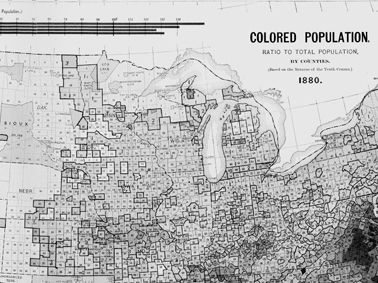
The Midwests African American population to the county level. Covert is in Van Buren County, which is in southern Michigan along Lake Michigan, where there is a large number 3 on the map. At the time Van Buren County had a black population of 2 to 10 percent.
Plate 24: Population (Colored Population), Fletcher Hewes and Henry Gannett, Scribners Statistical Atlas of the United States (New York: C. Scribners Sons, 1883). Library of Congress Geography and Map Division, Washington, D.C.
The differences between black folk and white folk are not blood or color, and the ties that bind us are deeper than those that separate us. The common road of hope which we all have traveled has brought us into a stronger kinship than any words, laws, or legal claims.
Richard Wright, 12 Million Black Voices
In the heartland of nineteenth-century America, a mixed-race community existed where blacks and whites lived as equal citizens. Starting in the 1860s the people of this place broke both laws and social expectations to develop a community of radical equality. Schools and churches were completely integrated, blacks and whites married, and power and wealth were shared between the races. Together, over the next fifty years, these residents of Covert, Michigan, continued to shatter the legal and social barriers to black freedom. This book is their story, a story that stretches across the decades from the Civil War to the close of the nineteenth century.








